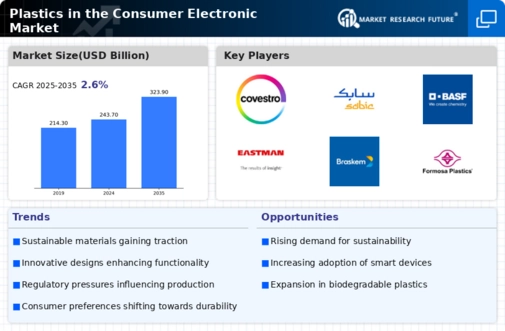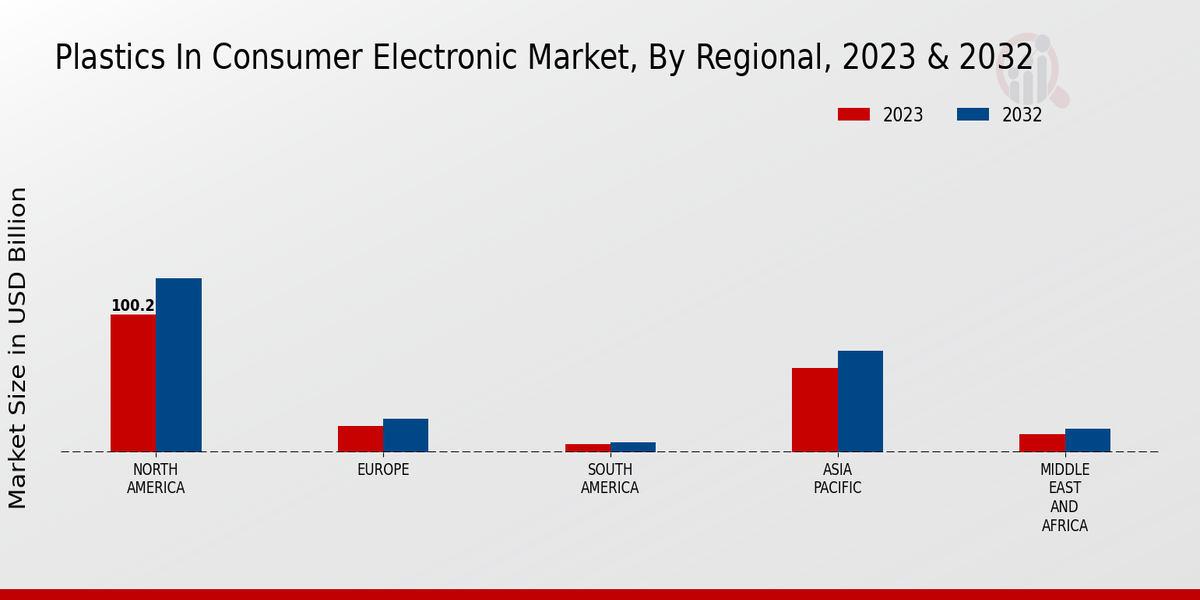Plastics In Consumer Electronic Market Summary
The global plastics in the consumer electronics market is projected to grow from 243.70 USD billion in 2024 to 323.96 USD billion by 2035.
Key Market Trends & Highlights
Plastics in the Consumer Electronic Key Trends and Highlights
- The market is expected to witness a compound annual growth rate (CAGR) of 2.62 percent from 2025 to 2035.
- By 2035, the market valuation is anticipated to reach 323.9 USD billion, indicating robust growth potential.
- in 2024, the market is valued at 243.70 USD billion, reflecting a solid foundation for future expansion.
- Growing adoption of sustainable materials due to increasing environmental regulations is a major market driver.
Market Size & Forecast
| 2024 Market Size | 243.70 (USD Billion) |
| 2035 Market Size | 323.96 (USD Billion) |
| CAGR (2025-2035) | 2.62% |
Major Players
Covestro, SABIC, BASF, DuPont, Eastman Chemical, Braskem, Formosa Plastics, Dow, LyondellBasell Industries, ExxonMobil, Mitsubishi Chemical, China Petrochemical Corporation, Sinopec, Toray Industries, Chevron Phillips Chemical























Leave a Comment